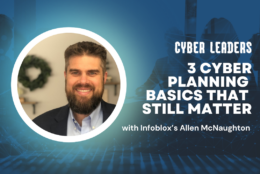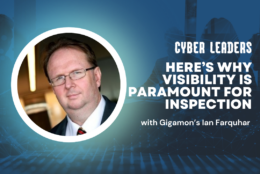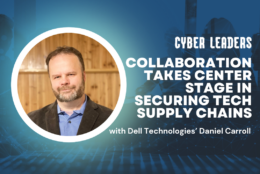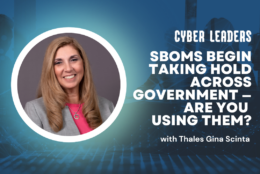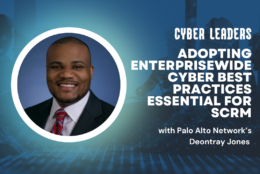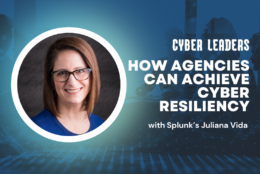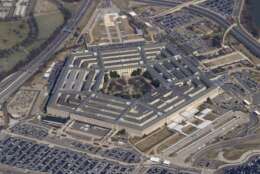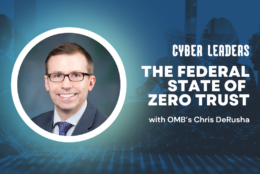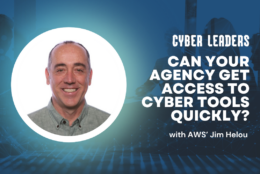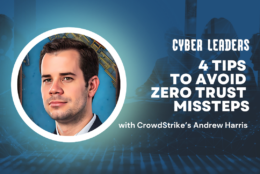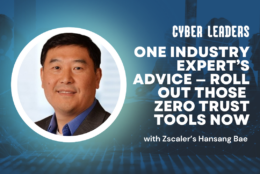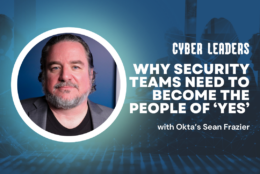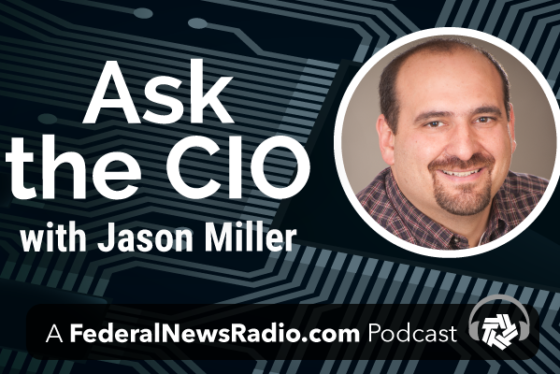Cybersecurity
-
As agencies continue to evolve their cyber capabilities, some preparatory basics still apply. The Federal Drive’s Tom Temin talks with Infoblox’s Allen McNaughten to get the lowdown on three things agencies should still be doing.
September 15, 2023 -
The Federal Zero Trust Strategy emphasizes visibility. It matters because “that’s how you detect compromised controls, compromised appliances, compromised firewalls. … Look at the traffic because that’s where the truth is,” Gigamon’s Ian Farquhar says.
September 15, 2023 -
With the National Cyber Strategy putting a premium on securing technology supply chains, public-private collaboration as well as cross-vendor initiatives have become essential, shares Dell Technologies’ Daniel Carroll.
September 15, 2023 -
SBOM requests from agencies are becoming more common, points out Thales’ Gina Scinta — it’s a sign of the swift impact of the National Cyber Strategy in shifting the responsibility for ensuring secure software use within the government.
September 15, 2023 -
The White House wants agencies to emphasize cyber supply chain risk management. To do so, offers Palo Alto Networks’ Deontray Jones, agencies must implement cyber best practices consistently and holistically across their enterprises.
September 14, 2023 -
“Probably one of the single most effective process changes that agencies can do is for people to get over themselves and change their mindset. The world today is not the world 10 years ago,” says Splunk’s Juliana Vida, who offers ways to move forward.
September 14, 2023 -
Following the President’s invitation to the private sector to collaborate with the federal government on the National Cybersecurity Strategy’s execution, the White House released the National Cybersecurity Strategy Implementation Plan (NCSIP). The strategy did not include a way to “RSVP” to the President’s invitation, nor does the NCSIP. The absence of specified lines of communication for the private sector to follow provides an open forum for organizations to maximize initial engagement with the federal government.
September 13, 2023 -
An unclassified summary of DOD’s new cyber strategy offers few specifics as it outlines plans to protect the industrial base and improve technology used in cyber defense.
September 12, 2023 -
The government’s federal chief information security officer shares progress update on where agencies stand on implementing phishing-resistant multifactor authentication, endpoint detection and response, and cultural changes to improve cyber posture.
September 12, 2023 -
Can your agency get access to cyber tools quickly? Yes, says AWS’ Jim Helou. It’s one of the benefits of the cyber partnerships available through Marketplace: providing agencies access to combinations of tools needed for zero trust — on a compressed timeline.
September 12, 2023 -
Yes, zero trust is a journey. But it also requires being holistic in your approach, recommends CrowdStrike’s Andrew Harris. He shares this plus three other tips for success in implementing zero trust with The Federal Drive’s Tom Temin.
September 12, 2023 -
Maybe Hansang Bae once worked at Nike. When he’s taking about zero trust, he’s so passionate that you expect at any moment he’s going to say, “Just do it.” What he definitely did say was: “My advice is to get going. The technology is mature enough.”
September 12, 2023 -
Zero-trust architecture has been top-of-mind for the federal government, especially as we approach the one-year countdown for the White House’s zero-trust memorandum deadline.
September 12, 2023 -
Getting rid of passwords once and for all is really about creating strong security that’s also frictionless for users, explains Okta’s Sean Frazier in a conversation with Federal News Network’s Jason Miller. What will that take?
September 12, 2023 -
Alex Whitaker, the director of government affairs for the National Association of State Chief Information Officers, said pushing for broader adoption of the .gov domain and harmonization of federal cyber regulations.
September 11, 2023

